One of the advantages of leasing is to have someone else fix the problems, right? Tenant pays rent, Landlord fixes things. That’s what an idea commercial real estate lease contain from a Tenant viewpoint, right?
Welcome back to the real world.
First, some definitions:
Repairs and maintenance: A repair is to fix something broken (air conditioning that isn’t working) and maintenance is to keep something in working condition (changing the air filter in the air conditioning). These are expected, routine expenses that can be accounted for in CAM (common area maintenance, check out my CAM post for more information).
Replacement: A thing can’t be fixed, so a new one has to be acquired and put into use, and the old, broken one disposed of. Replacements are usually expected, but unpredictable in nature (you can’t always be sure when the hot water tank will need replaced). The really expensive items that need replaced are sometimes capital expenditures.
Capital expenditure: A financial term and it has to do with taxes and depreciation. A capital maintenance item could be a repair or replacement. It might be covered through CAM, or there could be a special assessment. A capital improvement is changing out what is already there for something else to make the situation better. It’s big, it’s expensive, and it is something where Landlord generally reaps longer-term benefits.
HVAC: Heating, ventilation and air-conditioning. When included as part of plumbing, electrical, sprinkler, life-safety, etc., these are known all together as systems.
What To Negotiate:
– Tenant should repair/replace/maintain what it brings onto the property. Tenant should contribute its proportionate share of common area maintenance through CAM payments.
– Tenant is still responsible for maintaining the stuff inside its space. This means things like filter checks and replacements, maintenance contracts, pest control, etc. Tenant probably doesn’t get the tax benefits of a replacement (like depreciation), so is a good place to read closely and negotiate.
– A system could exclusively service Tenant, such as a dedicated plumbing or HVAC system. If Tenant is the only one that is using it, make sure it is in good condition, because Tenant should be responsible for maintaining it.
– Find out how old the HVAC system is! Find out if it is still under warranty! Find out if it has been regularly services and maintained! Ask questions and get documentation! Otherwise, Tenant might end up with an unexpected expense, or worse, in default if the repair isn’t made and Landlord does it instead.
– Landlord should generally maintain, repair and replace systems that service the common areas or that are not exclusive to one tenant, the structural portion of the building, the foundation and the roof, as well as the common areas of the building. These are shared, and are part of CAM. Watch out for replacement expenses sneaked in there. Negotiation tip: A CAM cap can limit the increases in some of the expenses!
Of course, if there is a casualty or someone is negligent, then all of the above could completely not apply! If it’s a true triple net (net-net-net or NNN) lease, then Tenant is responsible for the cost of repairs and maintenance anyway.
– Tenant needs understand the agreement before being bound by it. A commercial real estate lease ideally address who is responsible for what. It’s important to negotiate and comprehend the financial and legal results of the lease to avoid unexpected expenses and increases in payments.
Disclaimer:
This article does not create an attorney-client relationship. This article is for general education purposes only and is not legal advice. You should consult with a qualified attorney before you rely on this information.
